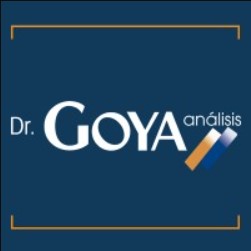The Importance of a Balanced Skin Microbiota: How to Properly Characterize a Dermo-cosmetic Product by Dr. Goya Análisis & Gaiker Technology Center
2 March 2023
The skin is the outermost barrier that serves as an interface between the human body and the environment and has a close relationship with the microbiota which consists of microorganisms such as bacteria, fungi and viruses. Some of these microorganisms are part of the normal skin microbiota, which vary according to anatomical location and physiological function. The skin is constantly affected by both external (e.g. antibiotics, personal care products, sunlight) and host-related factors (e.g. age, genetic variation, hormones, gender) that can influence host-microbe interactions and lead to changes and imbalances in the composition of the skin microbial community (dysbiosis), resulting in skin disorders or infections such as atopic dermatitis, candidiasis, acne, impetigo, wounds or onychomycosis.
The microorganisms that generate these conditions are not present on the skin as individual free-living forms, but as states of multicellular consortia attached to surfaces known as biofilms. These biofilms offer several advantages to microorganisms, such as production of an extracellular substance to hold microbial communities together, regulation of certain genes by quorum sensing, increased virulence and resistance to both antimicrobial therapy and host immune response. This implies that bacteria growing in biofilms are 50 to 500 times more resistant to antibiotics and other types of antimicrobial compounds. Therefore, biofilms represent a difficult challenge due to their persistent nature and their resistance to conventional antimicrobial therapy. A better understanding of the molecular biology of biofilms, their virulence, pathogenicity, and drug resistance is likely to greatly enhance the development of new antibiofilm agents for dermo-cosmetic use.
Considering that 80% of all human infections are associated with biofilms and that there is increasing evidence of their role in the chronic nature of many skin disorders, the study of the biofilm and its behaviour should occupy a central place in the development of new dermo-cosmetic products and drugs.
Historically, the detection and characterisation of skin microorganisms has relied on traditional culture-based methods to determine the minimum concentration of an active ingredient to inhibit the growth of individual microbial species. While this approach serves to guide us in the selection of the dose response of the active ingredient, there is a need to carry out more complex studies including biofilm analysis using advanced technologies such as confocal microscopy and advanced next-generation sequencing analysis, which allow the assessment of active ingredients in a high-throughput culture-independent and more realistic approach.
Next generation sequencing based methods eliminate biases associated with isolating and culturing microbes in the laboratory to more accurately profile the composition of microbial communities. Thus, in in human volunteers’ trials of dermo-cosmetic products aimed at maintaining the microbiome, it is necessary to have precious control of the variations in the different species that make up the cutaneous microbiota due to the application of the product. For this purpose, the use of tools such as next-generation sequencing, a reference technique that counts with a growing number of scientific and technological applications, is of particular interest.
This technology is based on the amplification and sequencing of the 16S ribosomal RNA gene. This gene has highly conserved sequence regions among all bacterial species that allow bacterial identification at the species level. Thus, by means of skin swabbing in the desired area, the bacterial community present in the selected area is recognised and percentages of every present species are obtained. This technology, applied to the development of cosmetic products for the skin, enables the evaluation of the potential impact of the products on the variation of the species present in the skin microbiome. Longitudinal studies in which the bacterial community is analysed before, during and after product application can label a product as “microbiome friendly”. Moreover, it is possible to evaluate the therapeutic effect of a product on sensitive skin by monitoring the longitudinal evolution of the relative abundance of pathogenic species.
GOYA ANÁLISIS is a laboratory with a long history in the execution of tests, which offers support to the cosmetic, medical device and food supplement industries, from the R&D stage to the marketing of the products, with a 360º service based on proximity to the client and the adaptation of protocols and services to each one of them, all under strict quality standards.
https://www.laboratoriogoya.com/
GAIKER, member of Basque Research and Technology Alliance, BRTA, is a spanish technology center that, since 1985, has carried out more than 2,300 R&D projects related to its Knowledge Areas: Biotechnology, Composites and Sustainable Functional Polymers and Recycling and Circular Economy. In addition to the R&D activity -its core business-, GAIKER offers its clients Advanced Technological Services, Analysis and Testing and Technological Dissemination Services.
CONTACT
Iván Parra
Comercial Director
iparra@laboratoriogoya.com
Felipe Goñi
Biotechnology Area Manager







 Follow us on Linkedin!
Follow us on Linkedin!
You must be logged in to post a comment.